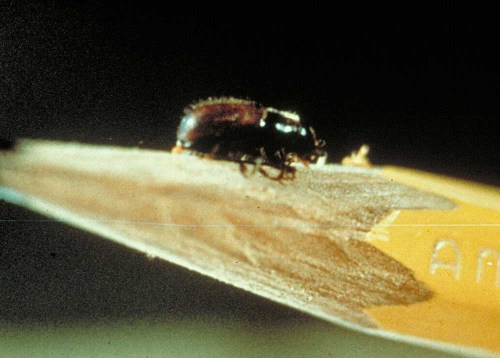More bark beetle activity expected in forests this year
Published 3:30 pm Friday, May 6, 2022

- A Douglas fir beetle.
Drought last year means more bark beetle activity this year.
More tree mortalities are expected due to Western pine beetle, Douglas fir beetle and ips, or pine engraver beetle.
Trending
“It stems from a lot of our forests being overstocked to begin with, which leads to moisture stress among trees,” said Chris Schnepf, University of Idaho Extension forestry educator. “Drought certainly exacerbates that, and the beetles are just taking advantage of that.”
Many Douglas fir trees fell during the winter of 2020-2021, making easy pickings for beetles. Douglas fir beetles also are attacking standing groups of trees, Schnepf said.
Root diseases make trees more likely to fall in winter storms, Schnepf said. Fallen, large, green Douglas firs create the breeding ground for the beetles.
Pine engraver beetles tend to attack smaller trees. Roughly 90% of beetles breeding in forest slash, or debris, are pine engraver beetles, Schnepf said.
“Historically, we have had two generations per year in North Idaho,” he said. “In recent years, increasingly, we’re seeing three generations a year because of the longer growing season.”
All the beetles are native to the region.
Trending
“When conditions are right, their populations can explode and you start seeing more tree mortality,” Schnepf said.
He’s seeing the worst pine beetle activity on stands south of Coeur d’Alene. He expects more Douglas fir beetle activity in spring and summer throughout the Idaho panhandle.
Moisture can strengthen the trees against the beetles. Rain, cooler conditions and longer snow periods are positives this year, Schnepf said.
“But it depends — last year we had a really good snowpack in the winter, but then the faucet just got turned off in the first part of the summer,” he said. “We didn’t get any precip until fall.”
However, when beetle populations are high, the insect pests can attack forests even in relatively moist conditions, especially if trees are overstocked.
Schnepf recommends forest owners monitor their land to see if they are developing any problems. They should reduce density, favoring the best trees for a given site.
“Sometimes people think, ‘Well, I had pines killed by bark beetles, maybe I should grow other species,'” Schnepf said. “That’s generally not a good approach. Sites where we have the most moisture stress tend to be the drier sites, and ultimately, pine are the best adapted species to those lower-elevation drier sites.”
Forest owners doing work this year should not leave green stemwood bigger than 3 inches in diameter out, which would feed additional beetle activity, he said.
UI Extension hosts a “Bark Beetle and Root Disease Field Day” June 10 in Coeur d’Alene. Pre-register by June 3. A $15 registration fee covers handouts and refreshments.
For registration questions, contact the University of Idaho Extension Office in Kootenai County at 208-292-2525.









